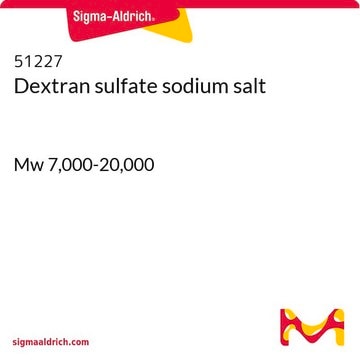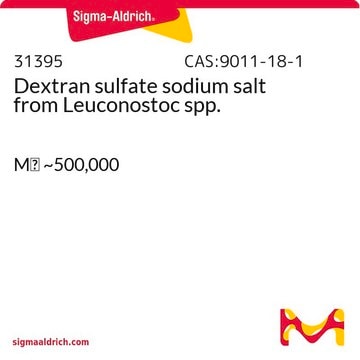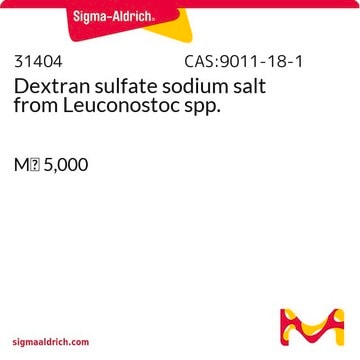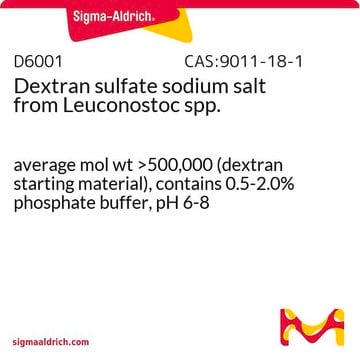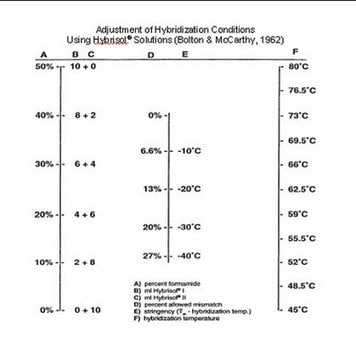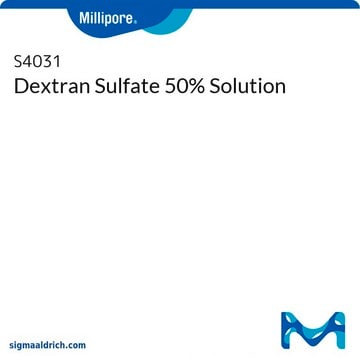42867
Dextran sulfate sodium salt
Mr ~40,000
Synonym(s):
DSS Dextran Sulfate Sodium
About This Item
Recommended Products
form
powder
mol wt
Mr ~40,000
loss
≤10% loss on drying
color
white to off-white
useful pH range
6.0-8 (10 g/L)
mp
(Decomposes on heating.)
solubility
water: soluble
storage temp.
room temp
Looking for similar products? Visit Product Comparison Guide
Related Categories
General description
Application
Biochem/physiol Actions
Other Notes
Storage Class Code
11 - Combustible Solids
WGK
WGK 2
Flash Point(F)
Not applicable
Flash Point(C)
Not applicable
Regulatory Listings
Regulatory Listings are mainly provided for chemical products. Only limited information can be provided here for non-chemical products. No entry means none of the components are listed. It is the user’s obligation to ensure the safe and legal use of the product.
JAN Code
42867-25G:
42867-VAR:
42867-100G:
42867-5G:
42867-BULK:
Certificates of Analysis (COA)
Search for Certificates of Analysis (COA) by entering the products Lot/Batch Number. Lot and Batch Numbers can be found on a product’s label following the words ‘Lot’ or ‘Batch’.
Already Own This Product?
Find documentation for the products that you have recently purchased in the Document Library.
Customers Also Viewed
Articles
Centrifugation enables the separation of particles by sedimentation. Learn how to separate particles using a centrifuge and how to use Stokes' law to calculate the velocity of sedimentation.
Explore FITC-labelled polysaccharides and their properties, including impact of molecular weight on molecule dimensions.
Our team of scientists has experience in all areas of research including Life Science, Material Science, Chemical Synthesis, Chromatography, Analytical and many others.
Contact Technical Service
